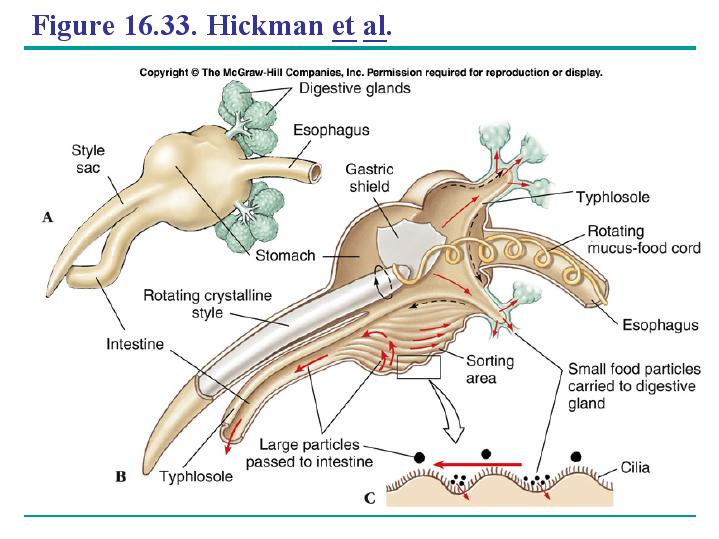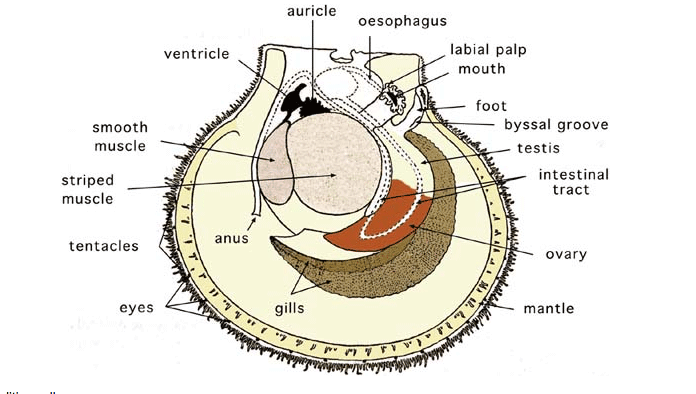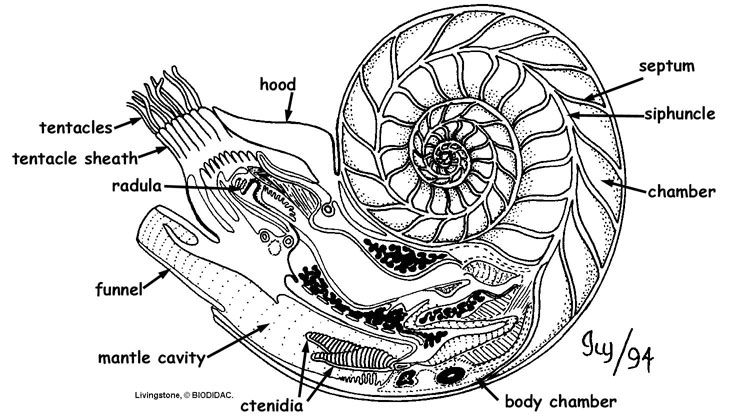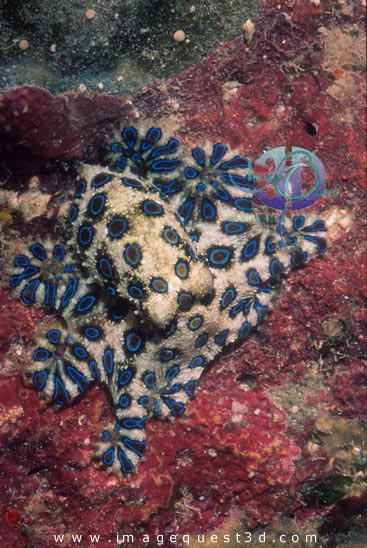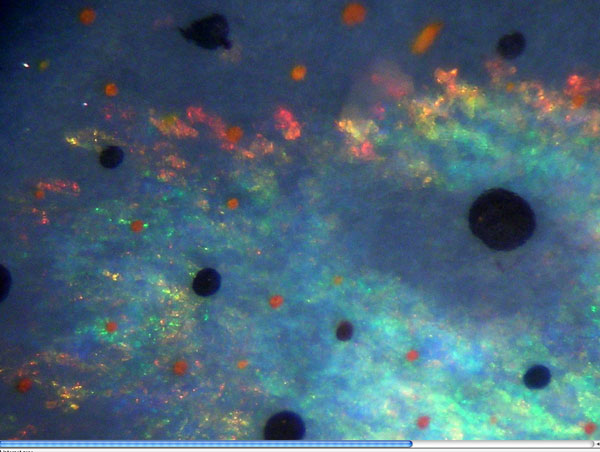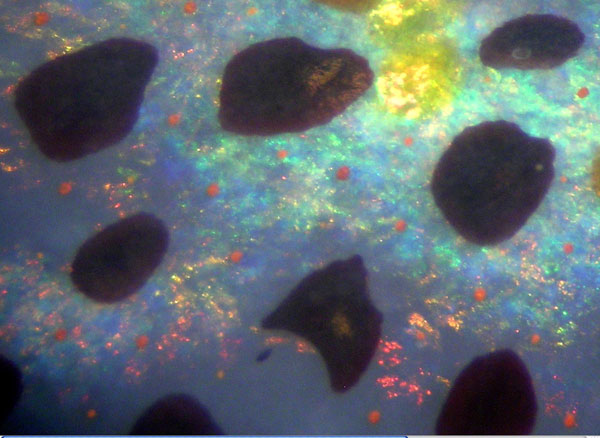The mantle cavity of bivalves is greatly expanded and now surrounds the rest of the body. Inside the mantle cavity of most are the large leaf-like ctenidia , each of which consists of a dorsal vascular axis from which hang an inner and outer gill plate, or demibranch, made up of numerous parallel gill filaments.
In many bivalves, the mantle margin has a sensory function and often possesses rows of parallel tentacles with tactile and chemosensory cells. In some species, the siphon tips may also possess such tentacles. Simple eyes or ocelli may be present in the mantle margin, sometimes remarkably well developed, as in the case of the scallop Pecten, with a cornea, lens and retina. Although scallop cans have complex eyes with a lens and retina, but most forms have no or very simple eyes. Even the more complex eyes of scallops probably do not function to resolve images, but are arranged to detect movement and changes in "shadowing".
There is no radula and most bivalves are filter feeders that may use their gill apparatus also to capture particles of food. For example in some, suspended particles passing through the ctenidial filaments are mechanically trapped by rows of laterofrontal cilia or cirri and transferred onto the frontal ciliary tracts of the filaments. Small particles are then carried in mucus by the frontal cilia to the dorsal or ventral margins of the ctenidia, where they are incorporated into compact mucus strings and transported to the mouth for ingestion via ciliated food tracts. Larger particles may simply ride along grooves to other parts of the ctenidia where they exist from the cavity. A mussel of about 1 year has the ability to pump between 2-3 litters of water an hour, an older individual can pump as much as 6-9 liters an hour.
In many filter feeding bivalves, an elongated rod of solidified mucus referred to as the crystalline style projects into the stomach from an associated sac. Cilia in the sac cause the style to rotate, winding in a stream of food-containing mucus from the mouth, and churning the stomach contents. This constant motion propels food particles into a sorting region at the rear of the stomach, which distributes smaller particles into the digestive glands, and heavier particles into the intestine.
In some mussels the labial palps do the sorting, before the food in moved into the mouth and down the digestive tract.
Other organs are similar to those of other mollusks although position may vary depending on the type of bivalve being examined.
Mussel-------------------------------------------------------------------------------------------clam

